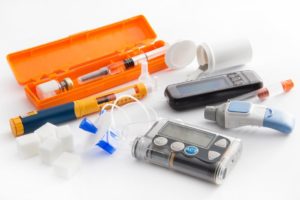
High technical precision in insulin pump seals is important for ensuring that seals meet regulatory requirements and will be operationally sound.
Drew Rogers, global director of healthcare & medical, Trelleborg Sealing Solutions
With more than 400 million adults worldwide suffering from diabetes and 1.5 million deaths directly attributed to the disease each year, it’s no wonder so many scientists, inventors and pharmaceutical companies are turning their attention to improving insulin delivery devices.
Diabetes is not only one of the most common chronic diseases; it is also complex and difficult to treat. Insulin is often administered between meals to keep blood sugar within a target range and at mealtimes based on the number of carbohydrates to be ingested. Basal insulin, also known as background insulin, is made by the pancreas and is the constantly present insulin in the body. While Bolus insulin is that extra insulin that the pancreas delivers in response to glucose ingested through meals. Insulin delivery devices aim to treat diabetes through adequate basal-bolus therapy.
A variety of insulin types are used to regulate blood-sugar levels, including fast-acting, short-acting, intermediate-acting, long-acting and pre-mixed. These are introduced into the body via a wide variety of devices, including traditional syringes, injection ports, insulin pens, conventional insulin pumps and patch pumps.
Get the full story on our sister site, Medical Design & Outsourcing.

